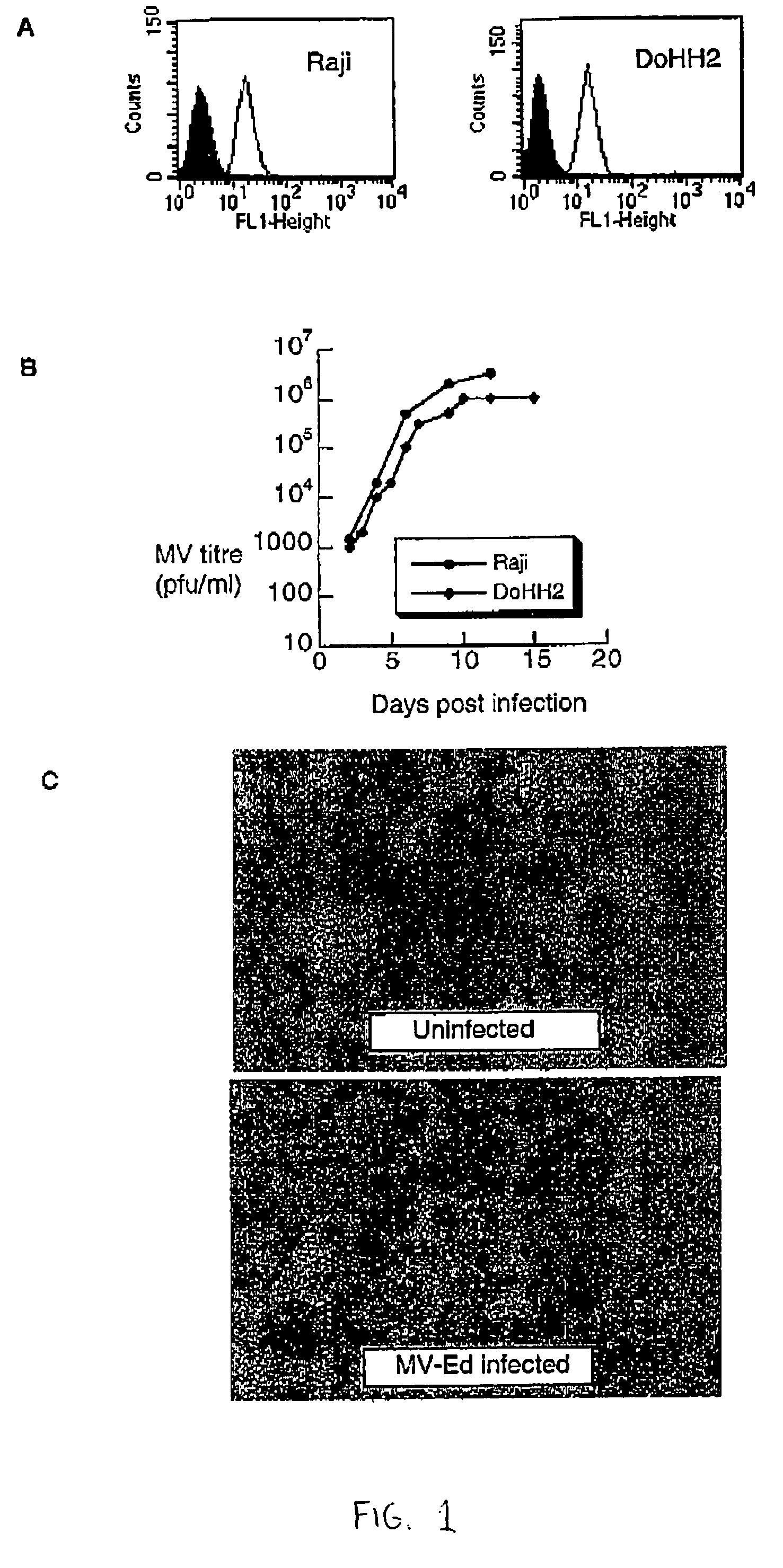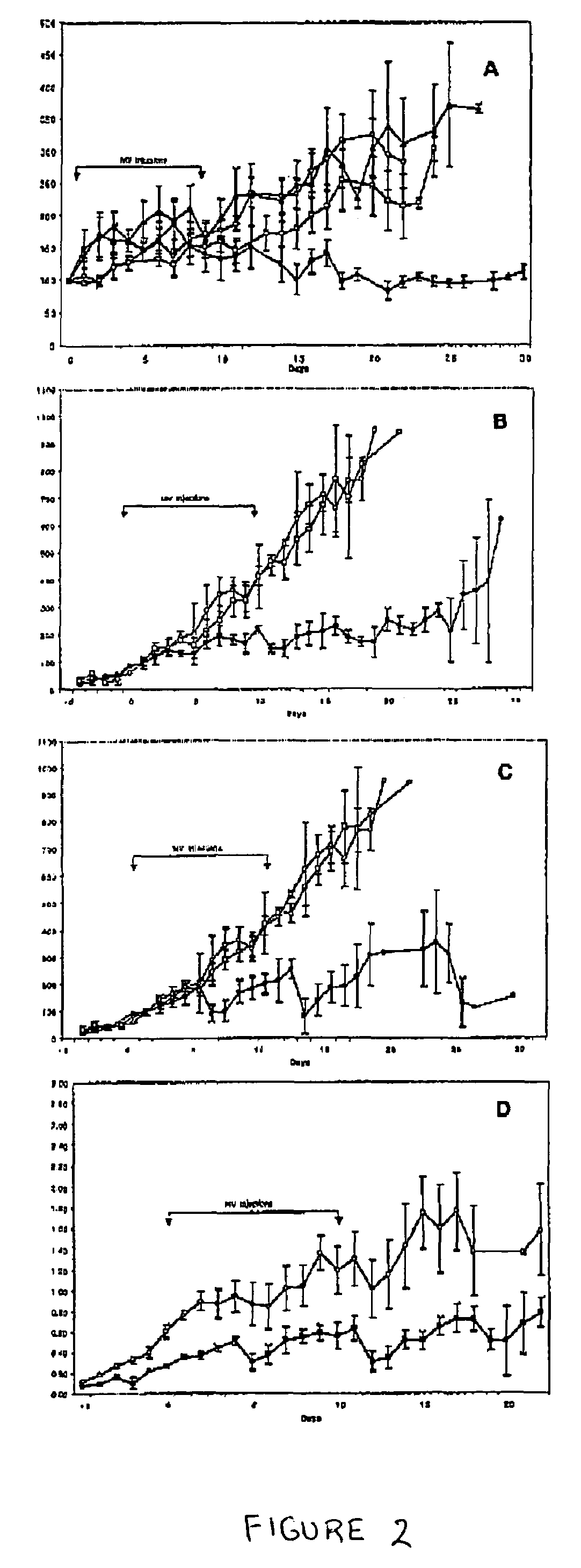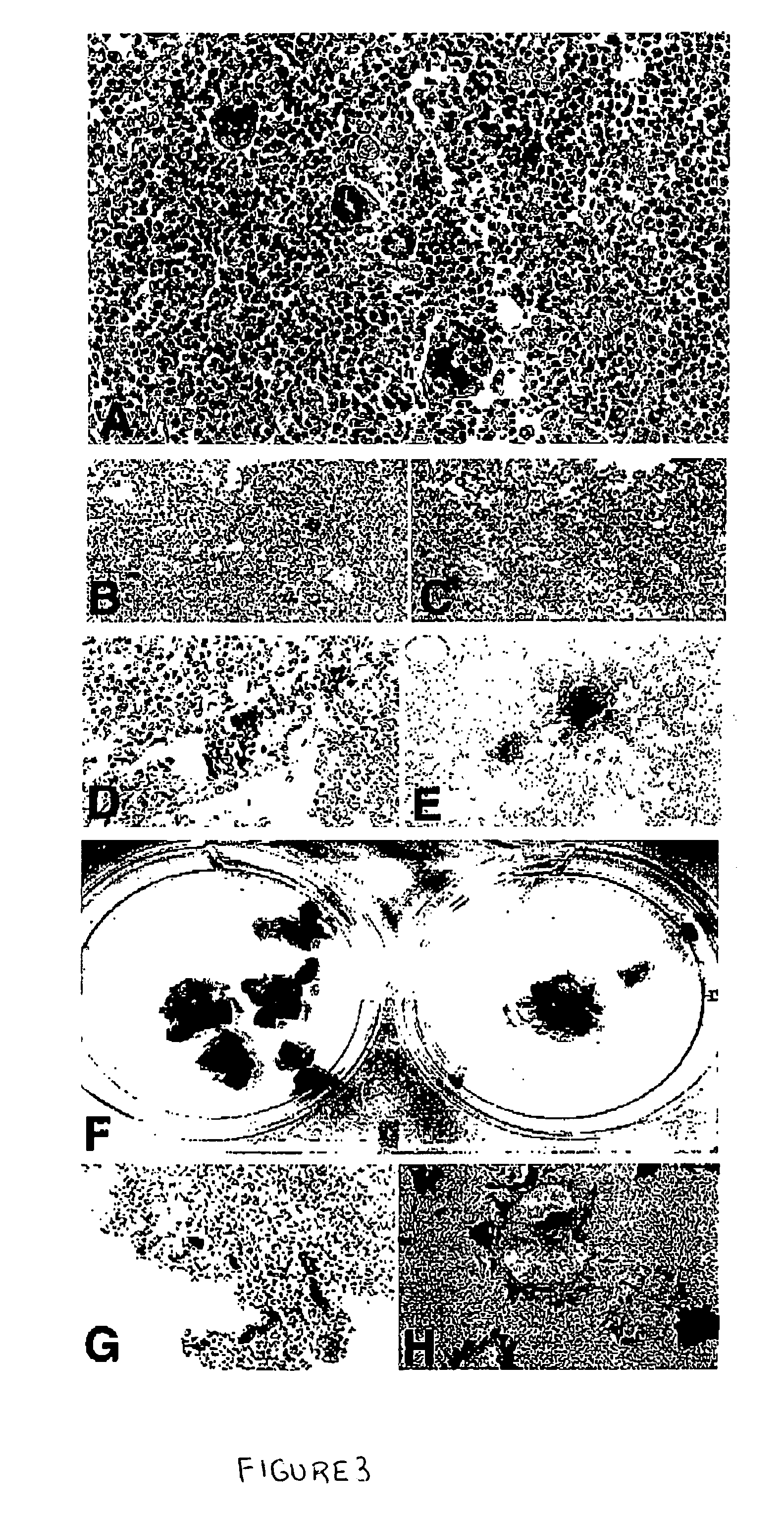Method for limiting the growth of cancer cells using an attenuated measles virus
a technology of attenuated measles and cancer cells, which is applied in the direction of drug compositions, immunological disorders, recovery/purification, etc., can solve the problems of preventing any complete cure, accompanied by severe side effects, nausea and vomiting, and affecting the normal function of the body, so as to limit the growth of cancer cells.
- Summary
- Abstract
- Description
- Claims
- Application Information
AI Technical Summary
Benefits of technology
Problems solved by technology
Method used
Image
Examples
example 1
Using Attenuated Measles Virus to Limit Cancer Growth in a Non-Hodkin's Lymphoma Model
[0081]Performing the method according to the invention caused regression of an established tumor xenograft in SCID mouse models of B cell lymphoma. In one embodiment, two well-established lymphoma models, Raji and DoHH2 cells were used to represent high grade and low grade models, respectively, of Non-Hodgkin's Lymphoma. The Raji cell line was derived from a patient with Burkitt's lymphoma and is Epstein Bar Virus (EBV) positive. The DoHH2 cell line is EBV negative and derived from a patient with follicular lymphoma. Lymphoma xenografts were established by injecting 107 cells subcutaneously in the flank region of SCID mice.
Measles Virus Replicates Lytically in Dohh2 and Raji Cells
[0082]Non-modified Edmonston-B measles virus and measles virus genetically modified by the addition of a β-galactosidase reporter gene (MVlacZ) were generated by innoculation into Vero cells. MVlacZ reaches a maximum titer...
example 2
Using Attenuated Measles Virus to Limit Growth of Non-Lymphatic Cancers
[0092]To test the potency of MV-Edm on cancer cells other than non-Hodkin lymphoma cells, human melanoma, breast carcinoma, and glioma tumor xenografts were implanted subcutaneously in the hind flank of athymic or SCID mice, in addition to myeloma tumor xenografts. Established tumors were allowed to grow until they reached diameters between 4.3 to 6.4 mm (volume 50–169 mm3). Tumor-bearing mice were treated by intratumoral inoculation of 1×107 pfu of MV-Edm in 100 μl of Opti-MEM 1 and administered twice a week for a total of seven doses. Control tumors were injected with equivalent amounts of UV-inactivated virus. As shown in Table 2, MV-Edm markedly repressed the growth of all tumors tested and caused regression of the melanoma and myeloma tumors. In keeping with the lymphotropic nature of the measles virus, MV-Edm was found to be most effetive against ARH-77 myeloma xenografts. Tumors were highly sensitive to 10...
example 3
Intravenous Administration of MV-Edm Caused Complete Regression of Myeloma Xenografts
[0094]For systemic therapy using attenuated measles virus (e.g., to treat disseminated cancer cells), the antineoplastic potential of intravenously injected attenuated measles virus was determined. In one embodiment, SCID mice (CD-46 negative) bearing established ARH-77 meyeloma xenografts (CD46 receptor-positive) were treated by intravenous administration of 1×107 pfus of MV-Edm in 100 μl Opti-MEM adminstered as a single dose or repeated on alternate days for a total of seven doses (see FIGS. 5A–B). Control tumor-bearing mice were injected with equivalent amounts of UV-inactivated virus. Intravenous administration of a single dose of MV-Edm caused complete regression of 12 mm3 tumors in all treated animals by repeated intravenous administration of the same does MV-Edm (FIG. 5B). No treatment-related toxicity was observed, even at highest doses of MV-Edm, and treated animals remained in good health ...
PUM
| Property | Measurement | Unit |
|---|---|---|
| Fluorescence | aaaaa | aaaaa |
| Strain point | aaaaa | aaaaa |
Abstract
Description
Claims
Application Information
 Login to View More
Login to View More - R&D
- Intellectual Property
- Life Sciences
- Materials
- Tech Scout
- Unparalleled Data Quality
- Higher Quality Content
- 60% Fewer Hallucinations
Browse by: Latest US Patents, China's latest patents, Technical Efficacy Thesaurus, Application Domain, Technology Topic, Popular Technical Reports.
© 2025 PatSnap. All rights reserved.Legal|Privacy policy|Modern Slavery Act Transparency Statement|Sitemap|About US| Contact US: help@patsnap.com



